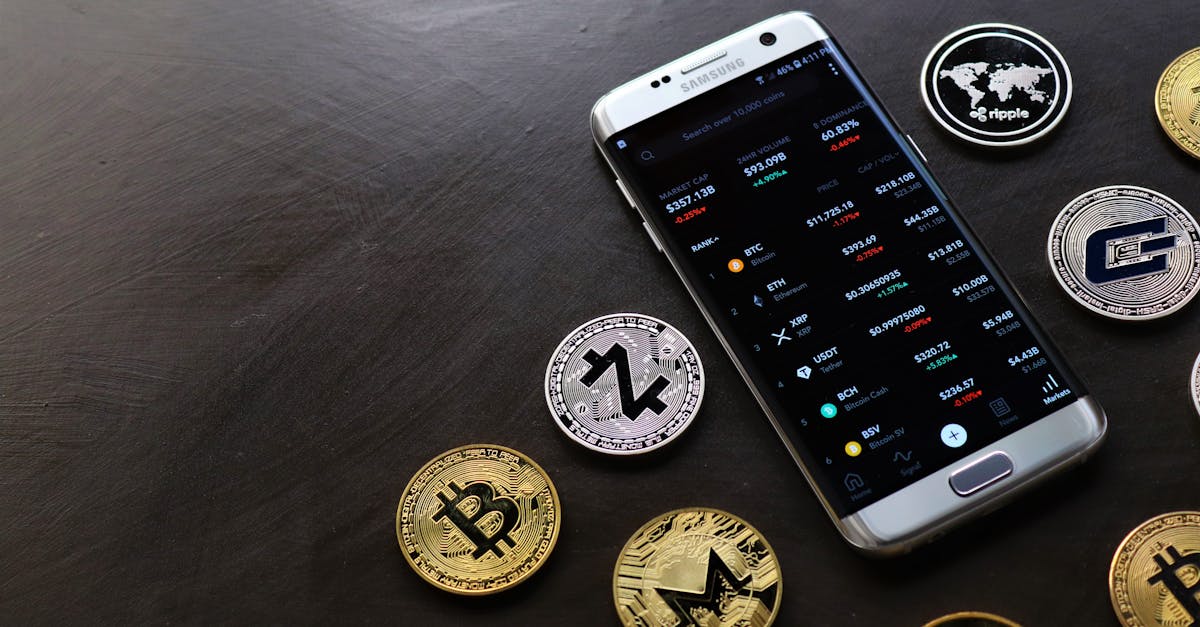Keeping your Bitcoin safe requires more than just buying and holding—it demands proper security measures. If you’ve been storing your cryptocurrency on exchanges or software wallets, you’re exposing yourself to unnecessary risks from hacks and security breaches.
Transferring your Bitcoin to a Ledger hardware wallet puts you in complete control of your digital assets. These cold storage devices keep your private keys offline, making them virtually immune to online threats that plague exchange platforms and mobile wallets.
Moving your Bitcoin to a Ledger might seem daunting at first, but it’s actually a straightforward process once you understand the steps. With the right preparation and careful attention to detail, you’ll have your cryptocurrency secured in one of the most trusted hardware wallets available today.
What Is a Ledger Wallet and Why Use It
A Ledger wallet is a hardware cryptocurrency wallet that stores your private keys offline on a physical device. The wallet uses a secure chip to generate and store cryptographic keys away from internet-connected devices. Ledger produces two main models: the Ledger Nano S Plus (£79) and the Ledger Nano X (£149).
Hardware wallets like Ledger protect your Bitcoin through cold storage technology. Your private keys remain on the device and never connect directly to the internet during transactions. The wallet generates a unique seed phrase comprising 12 to 24 words that serves as your master key for wallet recovery.
Enhanced Security Features
Ledger wallets offer multiple security layers that software wallets cannot match. The device requires physical button presses to confirm transactions, preventing unauthorised transfers even if your computer becomes compromised. PIN protection adds another barrier, with the wallet wiping itself after three incorrect attempts.
The secure element chip inside each Ledger meets Common Criteria EAL5+ certification standards. This military-grade security prevents physical tampering and protects against sophisticated attacks including voltage manipulation and electromagnetic analysis.
Protection Against Online Threats
Exchange hacks have resulted in billions of pounds in cryptocurrency losses since Bitcoin’s inception. Software wallets remain vulnerable to malware, keyloggers, and phishing attacks that can steal your private keys. Ledger eliminates these risks by maintaining an air gap between your keys and internet-connected devices.
Your Bitcoin transactions require physical verification on the Ledger screen before completion. Malicious software cannot alter transaction details or redirect funds without your explicit approval through the hardware device.
Long-term Storage Benefits
Hardware wallets excel at holding Bitcoin for extended periods without degradation or security concerns. The device remains functional even when stored offline for years, unlike software wallets that may become incompatible with updated operating systems. Battery-free models like the Nano S Plus maintain functionality indefinitely when properly stored.
Ledger’s recovery process works across all supported devices and third-party wallets that follow BIP39 standards. Your 24-word seed phrase provides universal access to your Bitcoin regardless of hardware failures or device upgrades.
Setting Up Your Ledger Wallet
Setting up your Ledger wallet establishes the foundation for secure Bitcoin transfers. The process involves three critical components that work together to create your hardware wallet environment.
Installing Ledger Live Software
Download Ledger Live from the official Ledger website to access desktop versions for Windows, macOS and Linux alongside mobile applications. Install the software on your preferred device and open the application to begin the initialisation process.
Update your Ledger device’s firmware through Ledger Live immediately after installation to ensure access to the latest security features. The software automatically detects available firmware updates and guides you through the installation process step-by-step.
Connecting Your Ledger Device
Connect your Ledger wallet to your computer using the provided USB cable or establish a Bluetooth connection if you’re using the Ledger Nano X. Unlock your device by entering your PIN on the hardware wallet’s physical buttons.
Navigate to “My Ledger” or “Manager” within Ledger Live to establish the connection between your device and the software. Confirm any connection requests that appear on your Ledger device screen by pressing the appropriate physical buttons to authorise the link.
Installing the Bitcoin App
Access the “Manager” section within Ledger Live once your device connection is established. Search for the Bitcoin application in the available cryptocurrency apps catalogue and select it for installation on your Ledger device.
Install the Bitcoin app directly onto your hardware wallet, keeping in mind that device storage limitations determine how many applications you can run simultaneously. Navigate to the “Accounts” tab in Ledger Live after installation to add a Bitcoin account, which automatically generates your first Bitcoin receiving address for incoming transfers.
Preparing Your Bitcoin Transfer
Preparing your Bitcoin transfer requires creating a dedicated Bitcoin account within the Ledger Live application and generating a secure receiving address. This preparation phase establishes the necessary infrastructure for safely moving your Bitcoin from exchanges or other wallets to your hardware wallet.
Creating a Bitcoin Account
Opening Ledger Live displays the main dashboard where you’ll access the accounts section. Navigate to the “Accounts” tab and select “Add account” to begin the Bitcoin account creation process. The application presents a list of supported cryptocurrencies where you must select Bitcoin from the available options.
Connecting your unlocked Ledger device enables the synchronisation process between the hardware wallet and the blockchain network. Ledger Live automatically detects your device and initiates the account verification process, scanning the Bitcoin blockchain for any existing transaction history associated with your device’s private keys. You can assign a custom name to your Bitcoin account such as “Bitcoin Main” or “BTC Storage” for easier identification when managing multiple accounts.
The synchronisation process typically completes within 30-60 seconds, depending on your internet connection speed and blockchain network activity. Your newly created Bitcoin account appears in the accounts list with a zero balance, ready to receive incoming Bitcoin transfers.
Generating a Receiving Address
Selecting your Bitcoin account from the accounts list opens the account management interface. Click the “Receive” button to initiate the address generation process, which triggers your Ledger device to create a unique Bitcoin receiving address. The Bitcoin app on your Ledger device must be open and active during this process.
Your Ledger device generates a fresh Bitcoin address each time you request one, enhancing privacy and security for your transactions. The receiving address appears simultaneously on both your computer screen within Ledger Live and on your Ledger device display. Bitcoin addresses typically begin with “1”, “3”, or “bc1” depending on the address format your device generates.
Modern Ledger devices primarily generate SegWit addresses (starting with “bc1”) which offer lower transaction fees and improved efficiency. The address generation process utilises your device’s secure element chip, ensuring the address derives from your private keys without exposing them to your computer or mobile device.
Verifying the Address on Your Device
Confirming the receiving address directly on your Ledger device screen represents the most critical security step in the transfer process. The address displayed on your hardware wallet must match exactly with the address shown in Ledger Live, character by character. This verification process protects against malware attacks that might substitute a fraudulent address on your computer screen.
Your Ledger device’s secure display shows the complete Bitcoin address, though you may need to scroll through longer addresses using the device buttons. Compare each character of the address systematically, paying particular attention to similar-looking characters such as “0” and “O” or “1” and “l”. The verification process typically takes 15-30 seconds for thorough checking.
Pressing both buttons on your Ledger device simultaneously confirms the address verification and approves its use for receiving Bitcoin. This physical confirmation creates a secure communication channel between your hardware wallet and the Ledger Live application, authorising the address for incoming transfers. Never skip this verification step, as using an unverified address could result in permanent loss of your Bitcoin.
How to Transfer Bitcoin to Your Ledger Wallet
Transferring Bitcoin to your Ledger wallet involves sending cryptocurrency from an exchange or another wallet to your hardware device’s receiving address. The process requires careful verification and follows specific steps depending on your Bitcoin’s current location.
From a Cryptocurrency Exchange
Log into your cryptocurrency exchange account where you currently hold your Bitcoin. Navigate to the withdrawal or send section, which most exchanges label as “Withdraw,” “Send,” or “Transfer.”
Copy your Bitcoin receiving address from Ledger Live and paste it into the exchange’s recipient address field. Verify this address matches exactly what appears on your Ledger device by pressing both buttons simultaneously when prompted.
Select the Bitcoin network from the available options, ensuring you choose “Bitcoin” rather than alternatives like Bitcoin Cash or Bitcoin SV. Enter the amount you wish to transfer, starting with a small test amount of £10-20 worth to verify the process works correctly.
Review all transaction details before confirming the withdrawal. Most exchanges require email verification or two-factor authentication to complete Bitcoin transfers. The transaction typically appears in your Ledger Live account within 10-60 minutes, depending on network congestion and the fee you’ve paid.
| Exchange Type | Average Transfer Time | Typical Fees |
|---|---|---|
| Major exchanges (Coinbase, Binance) | 10-30 minutes | 0.0005-0.001 BTC |
| Smaller exchanges | 30-60 minutes | 0.001-0.002 BTC |
| Peer-to-peer platforms | 15-45 minutes | Variable |
From Another Wallet
Open your current Bitcoin wallet application and locate the send or transfer function. Select the option to send Bitcoin and paste your Ledger receiving address into the recipient field.
Confirm the receiving address on both your sending wallet and Ledger device screens match identically. Enter the Bitcoin amount you want to transfer, considering that you’ll need to pay network fees from your existing balance.
Set an appropriate transaction fee based on current network conditions. Higher fees result in faster confirmation times, whilst lower fees may cause delays during busy periods. Most wallet applications suggest optimal fee rates automatically.
Double-check all transaction details including the recipient address, amount, and fee before broadcasting the transaction. Click send or confirm to initiate the transfer to your Ledger wallet.
Monitor the transaction status through your sending wallet’s transaction history or by using the transaction ID on blockchain explorers like blockchain.info or blockchair.com.
Confirming the Transaction
Check your Ledger Live application for incoming Bitcoin transfers, which appear as pending transactions initially. The software displays real-time updates as your transaction receives confirmations from Bitcoin miners.
Bitcoin transactions require six confirmations on average to be considered secure and fully settled. Each confirmation represents a new block added to the blockchain containing your transaction, occurring approximately every 10 minutes.
Monitor transaction progress using blockchain explorers by entering your transaction ID or Bitcoin address. These platforms show confirmation status, network fees paid, and estimated completion times based on current blockchain conditions.
Wait for the required confirmations to complete before considering your Bitcoin transfer successful. Your Ledger Live balance updates automatically once sufficient confirmations occur, typically within 60 minutes for standard transactions.
Verify your Bitcoin appears correctly in your Ledger account balance and transaction history. The transferred amount becomes immediately available for future transactions once the blockchain network confirms the transfer completely.
Verifying Your Bitcoin Transfer
Bitcoin transaction verification confirms your cryptocurrency has successfully arrived in your Ledger wallet. You can verify transfers through multiple methods to ensure complete security and peace of mind.
Checking Transaction Status in Ledger Live
Open Ledger Live and navigate to your Bitcoin account to view the transaction status. The application displays pending transfers with a clock icon whilst confirmed transactions show a green tick mark. Your account balance updates automatically once the transaction receives sufficient confirmations from the Bitcoin network.
Bitcoin transactions typically require 1-6 confirmations for full security, with most exchanges and wallets recognising transfers after 3 confirmations. Each confirmation takes approximately 10 minutes, though network congestion can extend this timeframe to 60 minutes or longer.
Using Blockchain Explorers for Verification
Access blockchain explorers like Blockchain.info or Blockchair to track your Bitcoin transaction independently. Copy your transaction hash (TXID) from the sending platform and paste it into the explorer’s search function.
The blockchain explorer displays comprehensive transaction details including:
- Confirmation count – Number of blocks confirming your transaction
- Transaction fee – Amount paid to miners for processing
- Input addresses – Sending wallet addresses
- Output addresses – Your Ledger receiving address
- Transaction size – Data size in bytes
Verifying the Correct Receiving Address
Cross-reference the receiving address shown in the blockchain explorer with your Ledger wallet’s address. This verification prevents errors from address typos or malware attacks that might alter displayed addresses.
Compare the receiving address across three sources:
- Your Ledger device screen
- Ledger Live application
- Blockchain explorer transaction details
All three sources must display identical addresses to confirm the transfer’s accuracy.
Troubleshooting Delayed Transactions
Bitcoin transactions can experience delays during network congestion periods when thousands of users compete for limited block space. Low transaction fees often result in longer confirmation times as miners prioritise higher-fee transactions.
Contact your sending platform’s support team if your transaction remains unconfirmed after 24 hours. Many exchanges can accelerate stuck transactions through fee bumping or transaction replacement mechanisms.
Monitor network congestion through mempool visualisers to understand current Bitcoin network conditions and expected confirmation times for your transaction fee level.
Security Best Practices for Ledger Wallets
Ledger wallets protect your Bitcoin through hardware-based security that keeps private keys offline on a secure element chip. These chips meet banking industry standards and remain isolated from internet exposure to prevent hacking attempts.
Verify addresses on your hardware device before confirming transactions to protect against malware attacks that could alter displayed addresses on your computer. The physical verification process ensures the address shown on your Ledger device matches exactly with the address in Ledger Live or other interfaces.
Download Ledger Live software exclusively from Ledger’s official website to avoid malicious versions that could compromise your security. Keep both your device firmware and Ledger Live software updated regularly to access the latest security patches and features.
Secure your recovery phrase offline in multiple physical locations rather than storing it digitally. This 24-word seed phrase serves as the master key to recover your wallet if your device becomes lost or damaged. Never photograph or store this phrase on internet-connected devices.
Use strong PIN codes containing 4-8 digits that aren’t easily guessable patterns like birth dates or sequential numbers. Enable all available security features on your Ledger device to maximise protection against unauthorised access attempts.
Avoid public or untrusted computers when managing your Ledger wallet to prevent exposure to keyloggers or malicious software. Use only your personal devices for cryptocurrency transactions to maintain the security benefits of hardware storage.
Enable additional authentication layers where available to create multiple security checkpoints before accessing your funds. These features complement the physical button confirmations required for all transaction approvals on Ledger devices.
The combination of offline private key storage and physical transaction verification creates multiple barriers against digital threats whilst maintaining user-friendly operation through Ledger Live’s interface.
Conclusion
Taking control of your Bitcoin security by transferring it to a Ledger wallet represents a crucial step towards protecting your digital assets. You’ve learned that this process isn’t as complex as it might initially appear and the enhanced security benefits far outweigh any initial hesitation.
Your Bitcoin is now safely stored offline with multiple layers of protection against online threats. The combination of hardware-based security and proper verification practices ensures your cryptocurrency remains secure for years to come.
Remember to maintain these security standards by regularly updating your device and software whilst keeping your recovery phrase stored safely offline. With your Ledger wallet properly set up you can confidently hold your Bitcoin knowing it’s protected by industry-leading security technology.
Frequently Asked Questions
What is a Ledger hardware wallet and why is it more secure than exchanges?
A Ledger hardware wallet is a physical device that stores your Bitcoin’s private keys offline, using cold storage technology. Unlike exchanges that store your cryptocurrency online, Ledger wallets create an air gap between your private keys and internet-connected devices. This offline storage protects against hacking attempts, exchange breaches, and malware attacks, whilst requiring physical confirmation for all transactions.
Which Ledger models are available and what are their main differences?
The two main Ledger models are the Nano S Plus and the Nano X. Both offer the same core security features including offline private key storage, secure element chips, and physical transaction verification. The primary differences lie in connectivity options, storage capacity, and additional features, though both provide identical security standards for Bitcoin storage.
How do I set up my Ledger wallet for Bitcoin transfers?
Setting up your Ledger involves four key steps: download Ledger Live software from the official website, update your device’s firmware, connect and unlock your Ledger with your PIN, and install the Bitcoin app on your device. This process establishes the secure foundation needed to create Bitcoin accounts and generate receiving addresses for transfers.
How do I generate a receiving address for Bitcoin transfers?
Open Ledger Live, create or select your Bitcoin account, and click “Receive” to generate a new receiving address. Always verify this address on your Ledger device’s screen before sharing it. Using a unique address for each transaction enhances privacy and security. Never skip the verification step as malware could potentially alter addresses displayed on your computer.
How long do Bitcoin transfers to Ledger wallets take to confirm?
Bitcoin transfers typically require 1-6 network confirmations for full security, usually taking 10-60 minutes depending on network congestion and transaction fees. Most exchanges recognise transfers after 3 confirmations. You can monitor progress through Ledger Live (showing pending with clock icon, confirmed with green tick) or blockchain explorers for detailed transaction information.
What should I do if my Bitcoin transfer is delayed or not appearing?
If your transaction remains unconfirmed after 24 hours, contact your sending platform’s support team. Check blockchain explorers using your transaction ID to verify the transfer was broadcast to the network. Network congestion can cause delays, so monitor current Bitcoin network conditions. Ensure you’ve verified the correct receiving address across all platforms.
What are the essential security best practices for Ledger wallets?
Always verify receiving addresses on your Ledger device before confirming transactions. Download Ledger Live only from the official website and keep firmware updated. Store your recovery phrase offline in multiple secure locations, use strong PIN codes, and avoid public computers for cryptocurrency activities. Enable additional authentication layers where possible for maximum security protection.
Can I recover my Bitcoin if I lose my Ledger device?
Yes, you can recover your Bitcoin using your 24-word recovery phrase on any compatible hardware wallet. This seed phrase is generated during initial setup and provides access to your cryptocurrency even if your device is lost, stolen, or damaged. Store multiple copies of this phrase securely offline, as anyone with access can control your funds.








